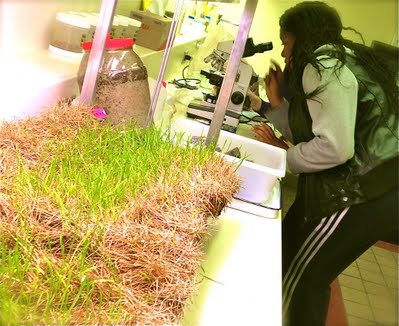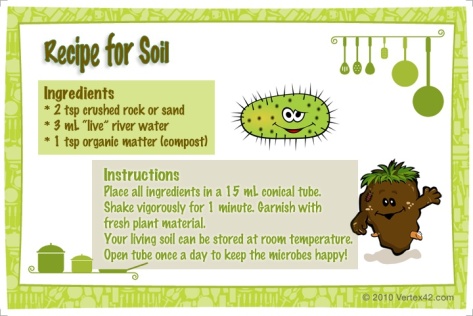
Isotopes?
A term thrown in so many different fields of science but never really successfully explained outside the realm of the super nerdy. They’re pretty simple, really- essentially just flavors of the same atom with different numbers of neutrons. More neutrons, heavier isotope. Too many neutrons, and your isotope becomes unstable, radioactively decaying over time to a different version of that element or perhaps another element entirely. With that brief introduction I’d like to explain one stable isotope system that is particularly interesting to me because it allows scientists to take a piece of the earth and reconstruct ancient environments.
C12 and C13 are stable isotopes of carbon- they both occur naturally in the environment and do not undergo any natural physical transformations over time. However, because of a small difference in their molecular weights due to the “extra” neutron in the C13 isotope, these two isotopes are processed quite differently in the environment.
Being slightly heavier means that C13 is a bit more difficult for biological systems to process. Most biological processes are adapted to using the lighter isotope, which is far more abundant. When air diffuses into plant leaves via stomates, the tiny pores that suck up carbon dioxide for photosynthesis, CO2 is tightly bound by an enzyme before it can diffuse out again. In most cases this enzyme is Rubisco (see post: enzymes in the environment) . It turns out that Rubisco preferentially binds to C12, causing C13-enriched air to be released back into the atmosphere. Since most plants take up CO2 via Rubisco (this is known as the C3 photosynthetic pathway), most plant tissue on Earth is depleted in C13 relative to the atmosphere.
However, when a plant keeps its stomata open to take up CO2, a problem emerges- transpiration. Water loss occurs primarily through these same pores that plants must keep open if they want to feed themselves. In hot, arid environments, this puts your normal C3 plants in a sticky situation. They must open their stomata to eat, but risk losing dangerous amounts of water when they do so.
Millions of years ago, a group of plants evolved a rather elegant solution to this problem, known as the C4 photosynthetic pathway. They co-opted an enzyme already present in mitochondria for cellular respiration and gave it Rubisco’s job. This enzyme, known as PEP-carboxylase (I’ll call it PEPC here for simplicity), has a much higher affinity for CO2 than Rubisco- in fact, it binds CO2 so tightly that leaf stomata only need to be open for a fraction of the time they would otherwise. The high affinity of PEPC for CO2 also means that it doesn’t “distinguish” C12 from C13- it grabs whatever CO2 molecule is closest and binds tightly.
What does it matter that two classes of plants fractionate C13 differently? Scientists now have the tools to analyze the molecular composition of plant tissue and can determine a plant’s specific C13/C12 ratio. C3 and C4 plants have distinct C13/C12 ratios and are easy to distinguish once isotopic analysis has been performed. For living plants, this would not be a terribly illuminating exercise- there are other anatomical and taxonomical ways to distinguish C3 and C4 plants that would be much more straightforward and less expensive.
But what about dead plants? Soil organic matter is composed principally of decomposed plant material, but even the most knowledgeable soil scientists aren’t able to look at a soil and say exactly what plants produced it. If we could, however, the soil would tell us numerous things. Accumulating over hundreds to tens of thousands of years, the soil profile from bedrock to the surface essentially represents a continuum of accumulated material that represents different floral and faunal assemblages, climate regimes and major environmental disturbances.
However, a complex series of transformation processes take place as plant material is decomposed and moved down the soil profile, some of which lead to C13 accumulation while others lead to C13 depletion. Carbon compounds are sorbed to surfaces, eaten by microbes, recycled, taken up by plants, leached, oxidized, and protected, to name a few. Given the inherent complexity of these systems, how can scientists can’t always sample down a soil pit and accurately describe species assemblages at different times using carbon isotopes alone.
A more fruitful path has involved obtaining environmental samples that have undergone relatively little decomposition, such as cores of sediment from the bottom of a lake, or a core of peat from an inundated field. The plant material within samples that have been buried or otherwise protected from decomposition will be relatively similar, at least at the molecular level, to the original plant tissue, and can thus provide meaningful information about a past environment. For example, a sudden switch from C3 to C4 dominated plant material could indicate a transition from a cooler, wetter climate to a warmer, drier one. Stable carbon isotopes have proved incredibly valuable in tracing the spread of human agriculture, which can often lead to rather dramatic changes in the isotopic signature of a sample.
Still don’t think isotopes are interesting? If you have a friend whose fidelity to vegetarianism is in question, sending a sample of their hair to an isotope lab should resolve the situation. Chances are, if you’re a vegetarian your C13 levels will be relatively high, indicating a more plant-rich diet (a disproportionate number of the world’s major crops are C4 plants).






